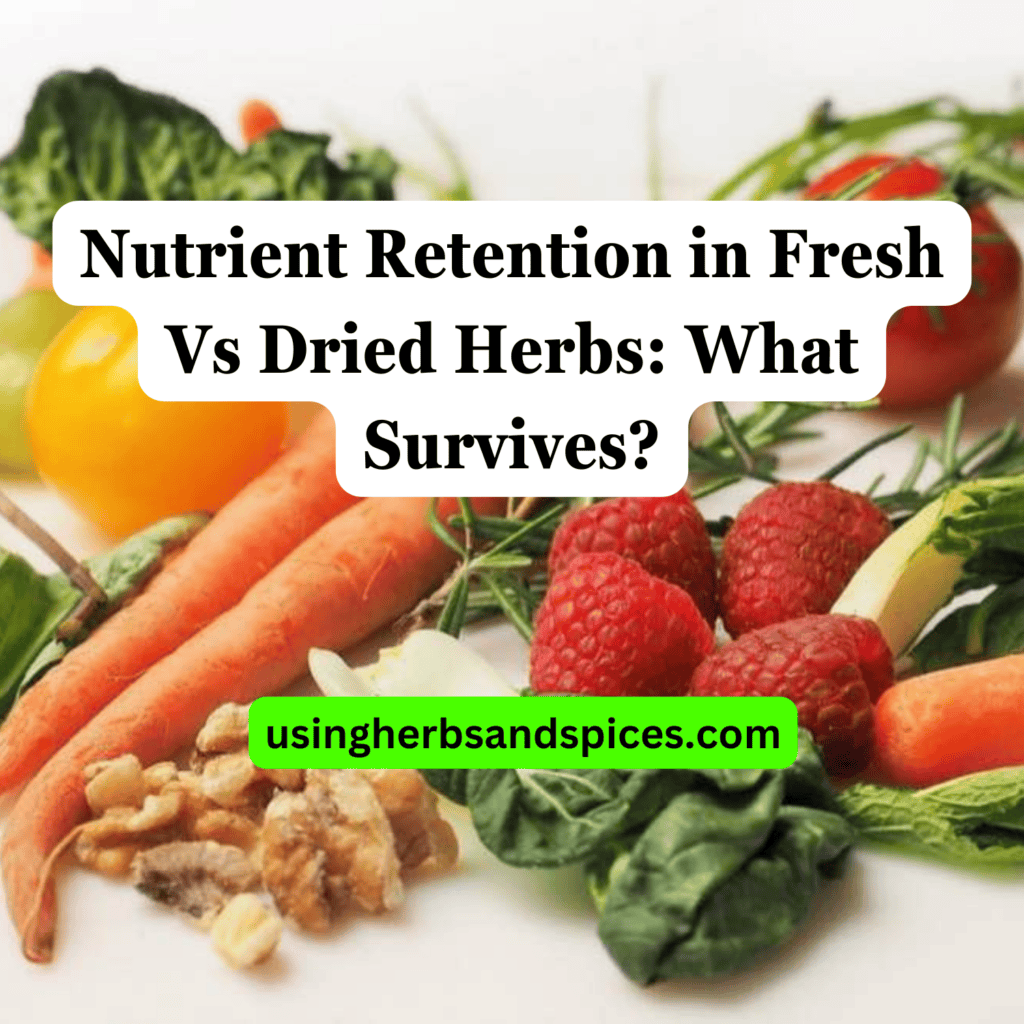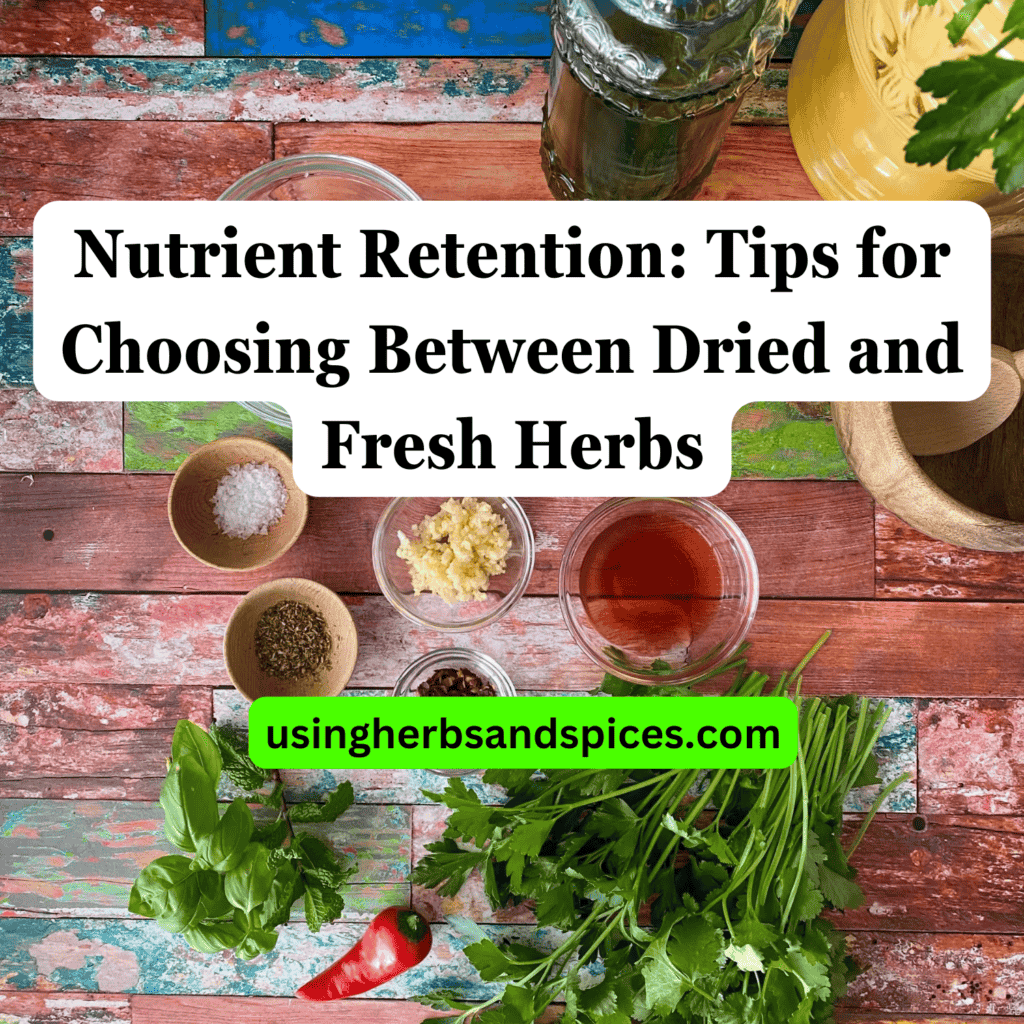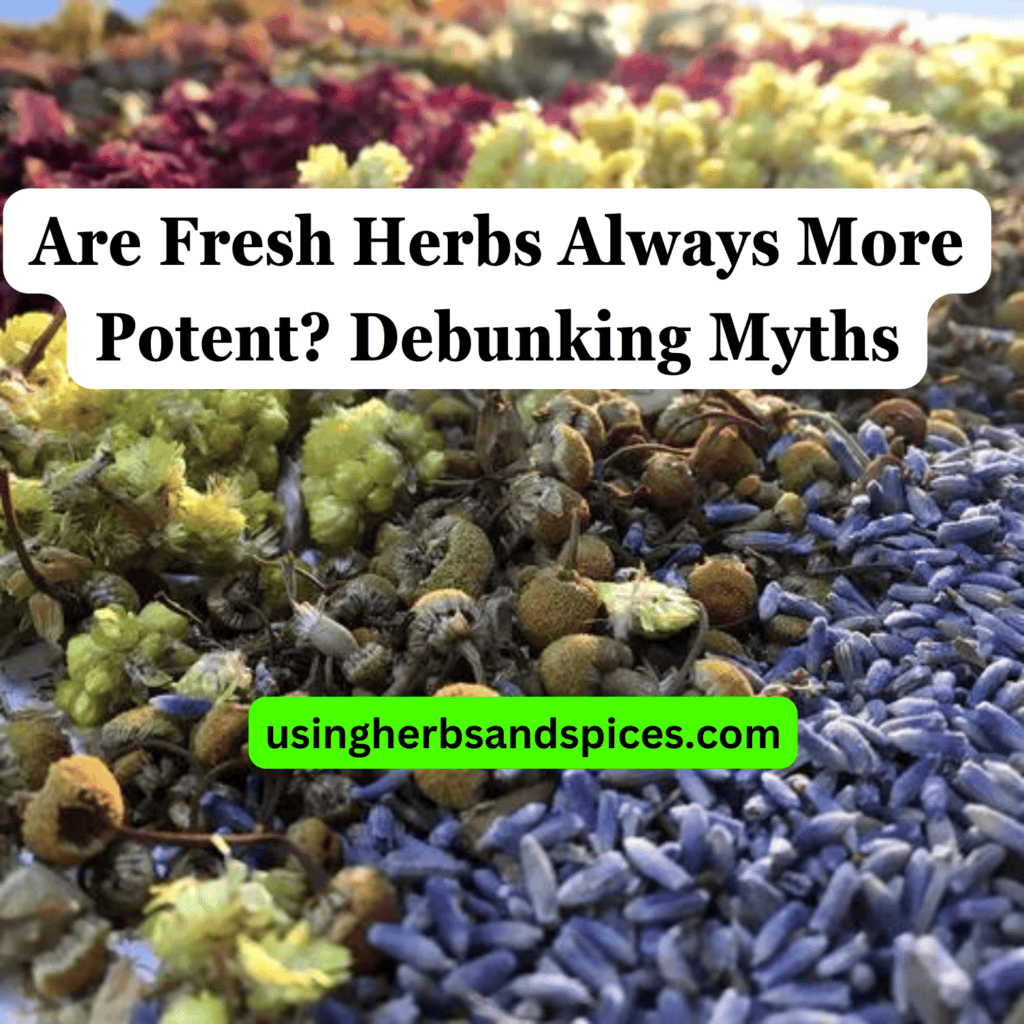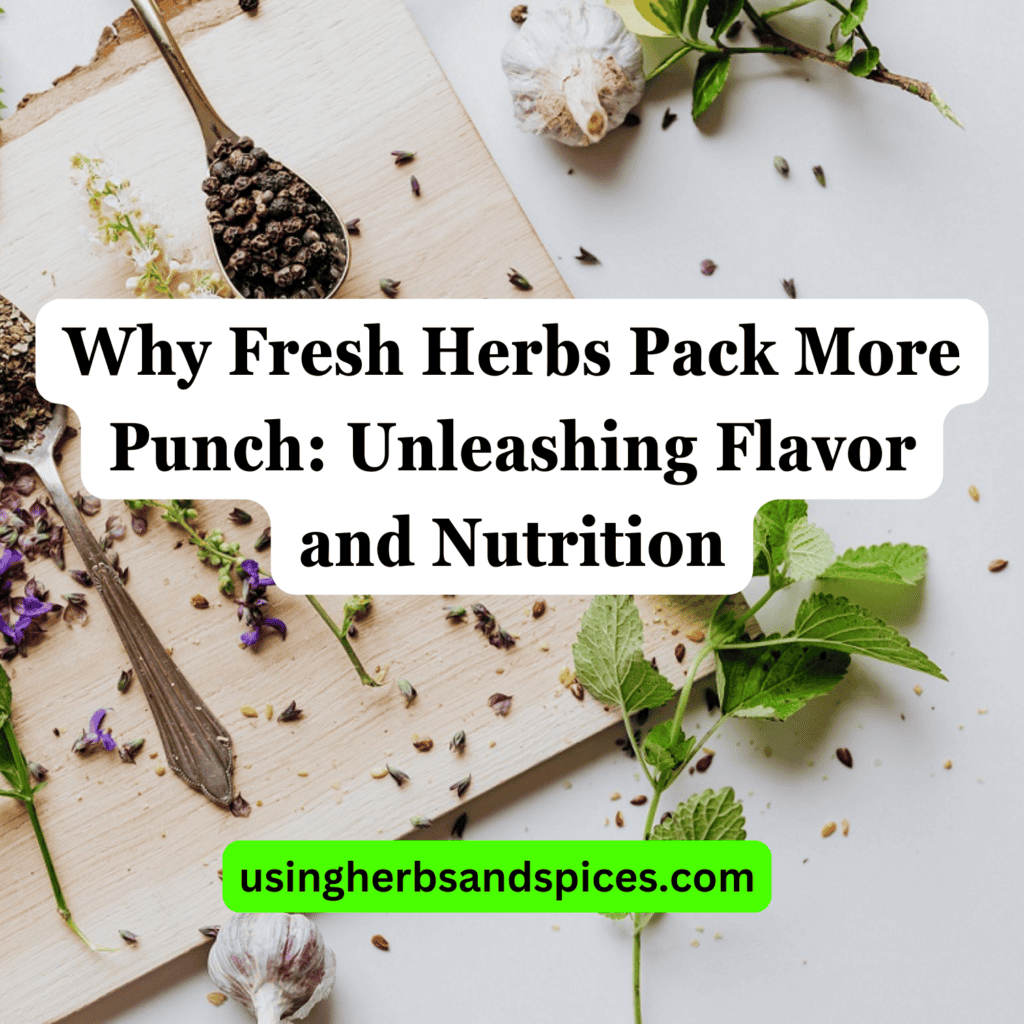SUMMARY: Fresh herbs bring vibrant colors and aromas to dishes with high nutritional content, but have a short shelf life. Dried herbs offer a concentrated flavor, longer shelf life, and a different, less potent nutritional profile.
Ever found yourself puzzled in the kitchen, debating whether to use fresh or dried herbs for your dish?
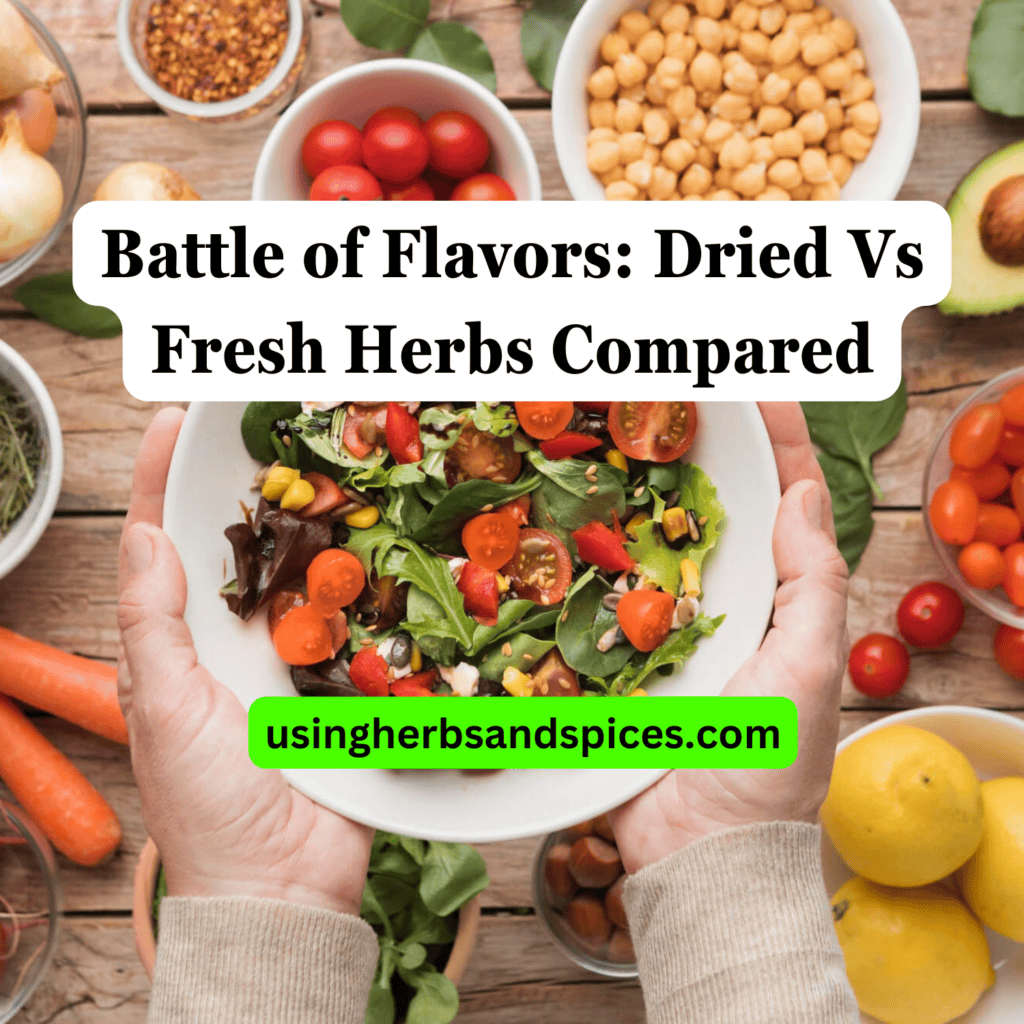
This comparison offers insight into the flavor and nutritional battle that could enhance your cooking.
- The vibrant allure of fresh herbs
- The convenience and intensity of dried herbs
- A detailed nutrient comparison of fresh vs. dried
- Practical tips for using herbs to elevate your culinary creations
Continue reading to demystify the choice between fresh and dried herbs, ensuring your dishes boast the perfect balance of flavor and nutrition.
The Essence of Fresh Herbs
Fresh herbs are the quintessence of garden-to-table cooking, celebrated for their vibrant colors, delicate flavors, and aromatic contributions to any dish. Picked at the pinnacle of freshness, they offer a burst of freshness that is hard to replicate. The moisture content in fresh herbs enhances their fragrant oils, making them an indispensable ingredient for adding a bright touch to recipes.
Moreover, fresh herbs are packed with a myriad of vitamins and minerals. Their nutrition is most potent immediately after harvesting, contributing not just taste but also health benefits to your meals. From basil’s sweet, peppery flavor to mint’s cool burst of freshness, these culinary gifts from nature encourage a healthier lifestyle without compromising on taste.
However, their shelf life is a key consideration; fresh herbs tend to wilt or lose their potency shortly after picking, necessitating proper storage or immediate use to capture their essence. Whether mixed into a salad, garnishing a dish, or infused into oils, the immediate impact of fresh herbs is unmistakable, bringing dishes to life with their natural, unadulterated flavors.
The Concentrated Power of Dried Herbs
Unpack the process of drying herbs and how it concentrates their flavors, making them more potent. Examine how drying affects the nutritional value of herbs and their longer shelf life. The transition from fresh to dried herbs is not just a shift in form but also an amplification of taste and aroma. As moisture is removed, the essential oils and flavor compounds within the herbs become more concentrated. This process allows dried herbs to pack a stronger punch in terms of flavor per gram compared to their fresh counterparts. Furthermore, without the moisture, dried herbs become less hospitable to bacteria, mold, and yeast, significantly extending their shelf life.
However, it’s worth noting that the drying process can have varying effects on the nutritional content of herbs. While some nutrients may diminish in the presence of heat and prolonged exposure to air, others, like certain antioxidants, remain stable and may even become easier for the body to assimilate. Understanding these subtle shifts is vital for maximizing both the health benefits and flavors of herbs in cooking.
Nutrient Comparison: Vitamin and Mineral Content
When comparing the nutrient content of fresh versus dried herbs, it becomes evident that the drying process has a substantial impact. Fresh herbs typically offer higher levels of vitamins, particularly vitamin C, which is sensitive to heat and air and tends to diminish during the drying process. However, dried herbs are not without their nutritional merits. They often contain more concentrated amounts of certain minerals, such as iron, calcium, and magnesium. This concentration is due to the reduction in water content, which, while decreasing the volume, does not affect the mineral composition significantly.
One notable aspect is the density of nutrients in dried herbs which makes them richer per gram in compounds such as antioxidants. This means that, although fresh herbs bring a burst of flavor and a higher vitamin content, dried herbs provide a more potent source of minerals and antioxidants, albeit in a smaller volume. Understanding this balance is key for anyone looking to maximize the nutritional value of their dishes. It’s also essential to consider that the culinary context—whether the herb’s flavor or its nutrients are being prioritized—can help determine which form, fresh or dried, may be more appropriate.
Culinary Uses and Flavor Profiles
The culinary world distinguishes distinctly between the uses of fresh and dried herbs, largely due to their diverging flavor profiles and the way they impart tastes to different dishes. Fresh herbs, often featured in salads, salsas, and as garnishes, provide a burst of vibrant, clean flavor that is difficult to replicate with dried varieties. Their fresh, aromatic qualities are best preserved when added towards the end of the cooking process or used raw, allowing their flavors to shine without being subjected to prolonged heat, which can diminish their nuanced tastes.
Dried herbs, on the other hand, are celebrated for their concentrated flavors and are a staple in the pantry for many cooks. They are most effective when allowed to simmer in dishes over time, making them ideal for use in soups, stews, and sauces. Their potency means they can withstand longer cooking times, which helps to infuse the dish with a deeper, more robust flavor. When substituting dried herbs for fresh, the general rule of thumb is to use one-third the amount of dried herbs to fresh, adjusting to taste as the dish progresses.
This difference in application underscores the importance of understanding the unique attributes each form brings to culinary creations. The choice between fresh and dried often comes down to the desired flavor intensity, the type of dish being prepared, and personal preference. Ultimately, both form an essential part of the flavor toolkit for chefs and home cooks alike, enabling a vast spectrum of culinary possibilities.
Maximizing Flavor and Nutrition
In our exploration of the complexities and benefits associated with both fresh and dried herbs, key insights have emerged to guide culinary enthusiasts in making informed decisions about their use.
- Fresh herbs offer vibrant colors, aromatic flavors, and are most nutritionally beneficial when consumed soon after harvest.
- Dried herbs provide a concentrated flavor that can be preferable in cooked dishes and benefit from a longer shelf life, making them a versatile pantry staple.
- Although drying herbs can alter their nutritional profile, they still retain a significant amount of their vitamins and minerals, making them a healthy addition to any dish.
- Understanding how to substitute dried herbs for fresh, and vice versa, ensures that the desired flavor profile of a dish can be achieved regardless of the form of the herb available.
This guide to the battle of flavors between dried and fresh herbs illustrates that the best choice depends on the specific needs of a dish, personal taste preferences, and nutritional considerations. Harnessing the unique qualities of each form enables cooks to elevate their culinary creations to new heights of flavor and healthiness.
Battle of Flavors: Dried Vs Fresh FAQs
Can you substitute dried herbs for fresh in cooking?
Yes, dried herbs can be substituted for fresh ones in cooking, but the conversion is crucial to getting the flavors right. Generally, because dried herbs are more concentrated, you should use one-third of the amount you would if using fresh. This ratio can help maintain the desired flavor profile of your dish without overwhelming it.
Do dried herbs lose their nutritional value?
While drying does affect the nutritional content of herbs, they do not lose all their value. Dried herbs tend to have a more concentrated nutrient profile by volume, but the overall loss of water content can lead to a reduction in some vitamins, especially those that are water-soluble. However, they remain a good source of minerals and antioxidants.
How should dried herbs be stored for maximum shelf life?
To maximize the shelf life and preserve the flavor and nutritional value of dried herbs, they should be stored in a cool, dark place in an airtight container. Exposure to heat, light, and air can degrade their quality more quickly. Properly stored, dried herbs can last up to a year or more, though it’s generally recommended to use them within six months for the best flavor.
Are there certain dishes that benefit more from fresh herbs rather than dried?
Certain dishes, especially those that are light and fresh, like salads, dressings, and some sauces, benefit more from the use of fresh herbs. Fresh herbs usually offer a brighter, more delicate flavor compared to their dried counterparts, which can enhance the overall freshness and appearance of the dish. For long-cooked dishes, dried herbs might be preferred as they hold up better and infuse the dish over time.


